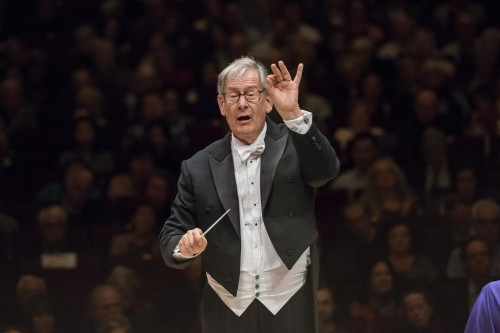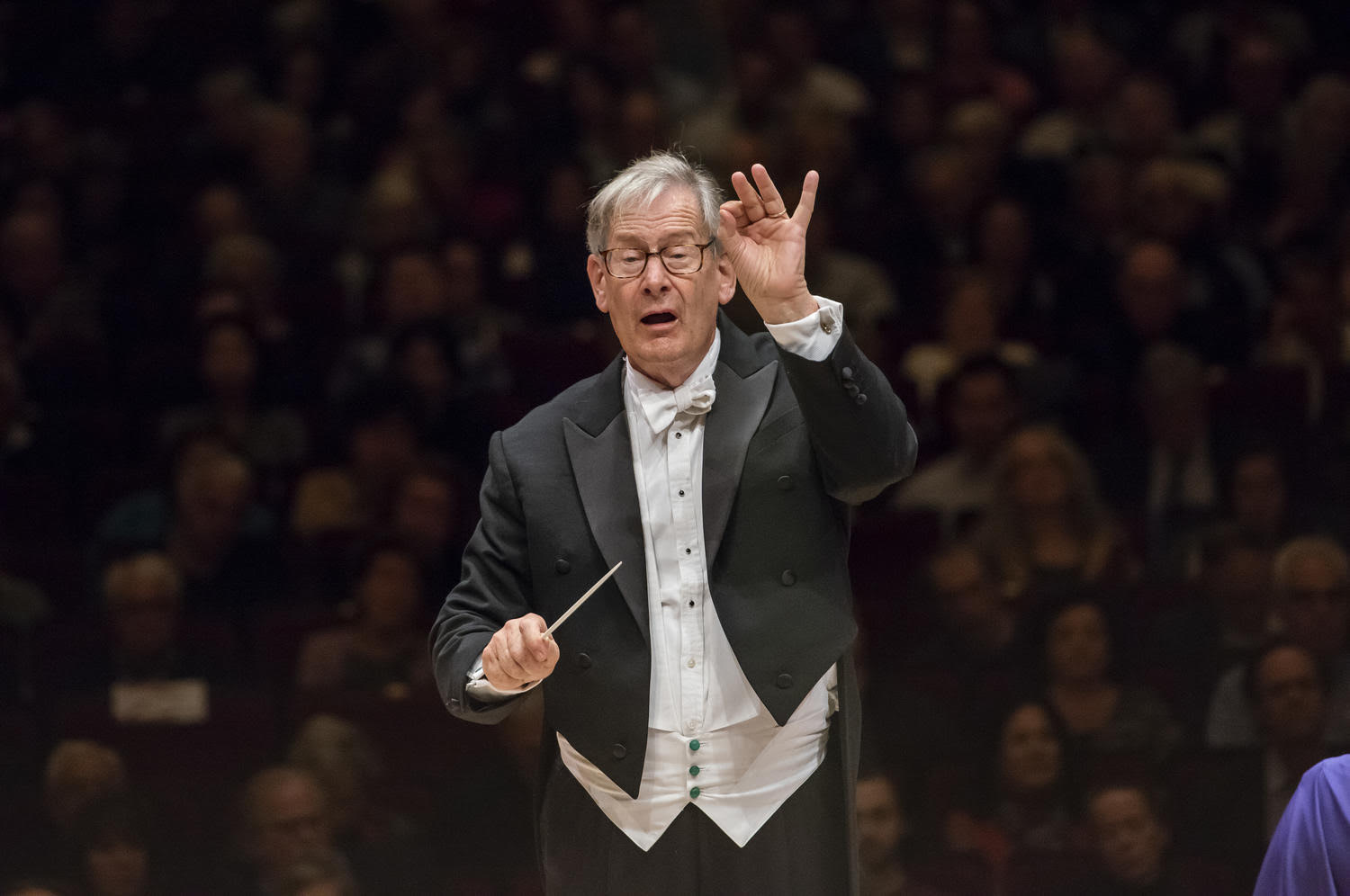 United States Berlioz: Michael Spyres (tenor), Ashley Riches (bass-baritone), Simon Callow (narrator), National Youth Choir of Scotland, Orchestre Révolutionnaire et Romantique / Sir John Eliot Gardiner (conductor), Carnegie Hall, New York, 15.10.2018. (RP)
United States Berlioz: Michael Spyres (tenor), Ashley Riches (bass-baritone), Simon Callow (narrator), National Youth Choir of Scotland, Orchestre Révolutionnaire et Romantique / Sir John Eliot Gardiner (conductor), Carnegie Hall, New York, 15.10.2018. (RP)

(c) Stephanie Berger.
Berlioz – Symphonie fantastique Op.4, Lélio, ou Le retour à la vie Op.14b
This was an extraordinary concert by Sir John Eliot Gardiner and the Orchestre Révolutionnaire et Romantique. Gardiner has long championed the works of Berlioz and for this concert recreated the 1832 performance of his Symphonie fantastique followed by its ‘conclusion and complement’, Lélio, ou Le retour à la vie. Berlioz’s command that the two works be performed together is routinely ignored, but it’s a fantastic, almost hallucinatory experience full of music thrills.
Orchestre Révolutionnaire et Romantique is Gardiner’s handpicked ensemble that has blazed new paths and challenged preconceived notions as to how the music of the early Romantics, especially Beethoven and Berlioz, should sound. It’s not been without controversy. Beauty isn’t the goal as much as giving free rein to the power and emotion of the music. On instruments of the period, everything is mellower, at times earthier. The brass instruments do not blaze as brilliantly, but their burnished warmth is part of a more homogenous, alluringly sinewy musical texture.
Symphonie fantastique was a whirl of astonishing sounds. The first movement was remarkable for its buoyancy and the incisive string playing. For the second, four harps were carried on stage and placed at its very edge facing Gardiner. (Berlioz wrote in his memoirs of the challenges in having the symphony performed due to a lack of capable harpists.) The solo cornet stood for his solos. The third movement was remarkable for its lightness and delicacy, so soft at time that you could hear the chairs creaking in the hall, and the fleet pizzicato passages in the strings.
‘The March to the Scaffold’ was dominated by the playing of the brass with the trombones and tubas practically blowing raspberries, sinister and grotesque. In the finale, the woodwind playing was riotous and comical. Instead of orchestral chimes, Gardiner used tapes of actual church bells tolling the death knell that led to a dizzying, kaleidoscopic climax.
Berlioz figured out multimedia long before it became a buzz word, at least in the musical sense. In addition to full orchestra and chorus, in Lélio there are songs set for tenor and harp or piano accompaniment, a rousing chorus for baritone and male chorus, duo pianists, harp solo and a narrator. An antique grand piano with a rich wood veneer dominated the stage, drawing the curious to inspect it once it was rolled out.
British actor Simon Callow was the narrator, groggily aroused from his opium-induced reveries and nightmares. He was an avuncular presence musing on the visions that he had seen and engaging with Gardiner and the chorus in friendly banter. Tenor Michael Spyres sang so beautifully, it made you wish that he would go on forever. It is hard to imagine lovelier sounds than his voice accompanied by harp in ‘Chant de bonheur’ in which he sang ecstatically of love.
The song was followed by more ethereal harp playing and captivating clarinet solos before the combined forces of orchestra and choir launched into the spectacular finale based on Shakespeare’s The Tempest for chorus and orchestra. This is where the duo pianists are called upon to play. (Lélio was the first appearance of the piano as an orchestral instrument.) It is Berlioz at his brilliant best and musical fodder for Gardiner and his orchestra. Cymbals crashed, the brass dazzled with their virtuosity and piano arpeggios filled the air. It ends as quietly as it began however, with the idée fixe theme recalling the obsessive love that links Lélio to the Symphonie fantastique.
Along the way bass-baritone Ashley Riches had led the men of the National Youth Choir of Scotland in a rousing pirate song. Gardiner has partnered with the chorus previously, and it is obvious why. It is one of the most exciting vocal ensembles that I have ever heard. Their sound was compact, focused and pliant, at times as raw and gutsy as the lower brass in the orchestra. You had the sense that Gardiner told them to jump and they interpreted the command as take flight and soar.
As the young singers basked in the applause at the end of the concert, the flag of St. Andrew was unfurled in the rear of the house. I am quite fond of Scotch whiskey and even enjoy haggis, but this might be the country’s finest export to hit these shores.
Rick Perdian
